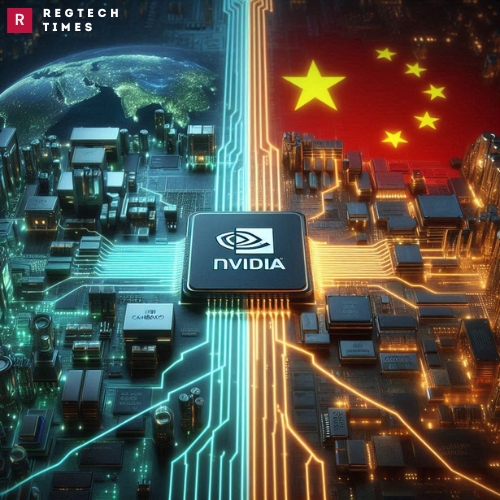In a strategic move to bolster its semiconductor industry and mitigate the impacts of U.S. sanctions, China is increasing pressure on its tech companies to reduce reliance on Nvidia’s AI chips. The Chinese government is not enacting a formal ban on the use of Nvidia’s H20 chips, which are critical for developing and running artificial intelligence (AI) models. Instead, it is issuing informal guidance, encouraging companies to prioritize local alternatives. This initiative aims to help domestic manufacturers gain market share while preparing local tech firms for any potential further restrictions from the U.S.
The Context of the Shift
The U.S. government has taken a series of steps to curb China’s technological advancements, notably banning Nvidia from selling its most advanced AI processors to Chinese customers in 2022. This action aimed to limit Beijing’s ability to enhance its military and technological capabilities. In response, Nvidia modified its product line, including the introduction of the H20 chip, to comply with U.S. regulations. However, as the geopolitical landscape evolves, the Chinese government is seeking to foster its own semiconductor industry, ensuring that local firms can thrive in an increasingly competitive environment.
Chinese regulators, including the Ministry of Industry and Information Technology, have begun issuing “window guidance,” a form of informal instruction that lacks the force of law. This guidance suggests that companies minimize their use of Nvidia’s products and instead turn to domestic vendors such as Huawei and Cambricon Technologies. While the directive is not a strict prohibition, it highlights Beijing’s commitment to enhancing the capabilities of its domestic semiconductor manufacturers.
Implications for Domestic Chipmakers
The emphasis on local alternatives aligns with China’s broader objectives to enhance self-sufficiency in technology. Major Chinese firms, including Huawei and Cambricon, are positioned to benefit significantly from this policy shift. These companies have been investing heavily in developing AI processors that can rival Nvidia’s offerings. Although local alternatives still lag behind Nvidia’s products in terms of performance and capability, the Chinese government’s support through subsidies and favorable policies aims to close this gap over time.
Beijing recognizes the importance of maintaining a competitive AI sector, with firms like ByteDance and Alibaba making substantial investments in AI research and development. Moreover, a plethora of startups are emerging, focusing on large language models essential for generative AI technologies. The competition among these firms highlights the urgency for China to develop a robust semiconductor ecosystem capable of meeting both domestic and global demand.
NVIDIA Faces Antitrust Scrutiny as U.S. Cracks Down on AI Market Control
Balancing Act: Compliance and Innovation
While the Chinese government encourages local firms to reduce their reliance on Nvidia’s products, it also acknowledges the need for some foreign technology to create effective AI systems. This dual approach reflects a nuanced understanding of the challenges faced by Chinese companies as they navigate a complex global landscape influenced by trade restrictions and competition.
Despite the push for local alternatives, some companies are reportedly disregarding the guidance to avoid Nvidia’s H20 chips. Faced with the prospect of further U.S. sanctions by the end of the year, these firms are rushing to acquire Nvidia’s chips while simultaneously purchasing Huawei’s products to demonstrate compliance with government directives. This behavior indicates a recognition of the immediate need for high-performance chips while also aligning with the long-term goal of enhancing domestic capabilities.
Nvidia’s Position in the Market
For its part, Nvidia remains committed to serving its customers in China while adhering to U.S. regulations. CEO Jensen Huang has emphasized the company’s dedication to compliance, stating that they will continue to do their best to support their customers in the region. Despite the geopolitical tensions and trade restrictions, China still represents a significant market for Nvidia, contributing approximately 12% of the company’s revenue, a figure that has grown over the past year.
Nvidia’s focus on maintaining its presence in China highlights the complexities of global supply chains and the interdependence of technology markets. As the company adapts its strategies to comply with regulations while meeting customer needs, it illustrates the ongoing challenges faced by tech firms in an era of rising protectionism.
China’s recent initiative to encourage local firms to move away from Nvidia’s chips signifies a critical step in its efforts to enhance self-sufficiency in technology and bolster its semiconductor industry. As the nation navigates the complexities of U.S.-China relations and seeks to strengthen its domestic capabilities, the landscape of the global semiconductor market is poised for significant shifts. The outcome of these efforts will have lasting implications not only for China’s technological aspirations but also for the competitive dynamics of the global AI and semiconductor industries.


